Diagnostic Accuracy of Memory Measures in Alzheimer's Dementia and Mild Cognitive Impairment: a Systematic Review and Meta-Analysis
- PMID: 28940127
- PMCID: PMC5886311
- DOI: 10.1007/s11065-017-9360-6
Diagnostic Accuracy of Memory Measures in Alzheimer's Dementia and Mild Cognitive Impairment: a Systematic Review and Meta-Analysis
Abstract
With an increasing focus on biomarkers in dementia research, illustrating the role of neuropsychological assessment in detecting mild cognitive impairment (MCI) and Alzheimer's dementia (AD) is important. This systematic review and meta-analysis, conducted in accordance with PRISMA (Preferred Reporting Items for Systematic reviews and Meta-Analyses) standards, summarizes the sensitivity and specificity of memory measures in individuals with MCI and AD. Both meta-analytic and qualitative examination of AD versus healthy control (HC) studies (n = 47) revealed generally high sensitivity and specificity (≥ 80% for AD comparisons) for measures of immediate (sensitivity = 87%, specificity = 88%) and delayed memory (sensitivity = 89%, specificity = 89%), especially those involving word-list recall. Examination of MCI versus HC studies (n = 38) revealed generally lower diagnostic accuracy for both immediate (sensitivity = 72%, specificity = 81%) and delayed memory (sensitivity = 75%, specificity = 81%). Measures that differentiated AD from other conditions (n = 10 studies) yielded mixed results, with generally high sensitivity in the context of low or variable specificity. Results confirm that memory measures have high diagnostic accuracy for identification of AD, are promising but require further refinement for identification of MCI, and provide support for ongoing investigation of neuropsychological assessment as a cognitive biomarker of preclinical AD. Emphasizing diagnostic test accuracy statistics over null hypothesis testing in future studies will promote the ongoing use of neuropsychological tests as Alzheimer's disease research and clinical criteria increasingly rely upon cerebrospinal fluid (CSF) and neuroimaging biomarkers.
Keywords: Alzheimer’s disease; Memory; Meta-analysis; Mild cognitive impairment; Neuropsychological testing; Sensitivity and specificity.
Conflict of interest statement
The authors report no conflicts of interest.
Figures
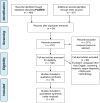

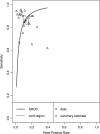
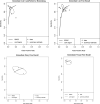




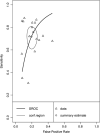
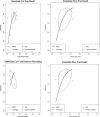

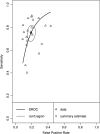

References
-
- Adam S, Van der Linden M, Ivanoiu A, Juillerat AC, Bechet S, Salmon E. Optimization of encoding specificity for the diagnosis of early AD: The RI-48 task. Journal of Clinical and Experimental Neuropsychology. 2007;29(5):477–487. - PubMed
-
- Albert MS, DeKosky ST, Dickson D, Dubois B, Feldman HH, Fox NC, et al. The diagnosis of mild cognitive impairment due to Alzheimer’s disease: Recommendations from the National Institute on Aging-Alzheimer’s association workgroups on diagnostic guidelines for Alzheimer's disease. Alzheimer's & Dementia. 2011;7(3):270–279. - PMC - PubMed
-
- Alegret M, Rodriguez O, Espinosa A, Ortega G, Sanabria A, Valero S, et al. Concordance between subjective and objective memory impairment in volunteer subjects. Journal of Alzheimer's Disease. 2015;48(4):1109–1117. - PubMed
-
- American Psychiatric Association. Diagnostic and Statistical Manual of Mental Disorders, Fourth Edition - Text Revision (DSMIV-TR) (IV ed.) Washington D.C: American Psychiatric Publishing, Inc; 2000.
-
- American Psychiatric Association. Diagnostic and statistical manual of mental disorders (DSM-5®) American Psychiatric Pub; 2013.
Publication types
MeSH terms
Grants and funding
LinkOut - more resources
Full Text Sources
Other Literature Sources
Medical

